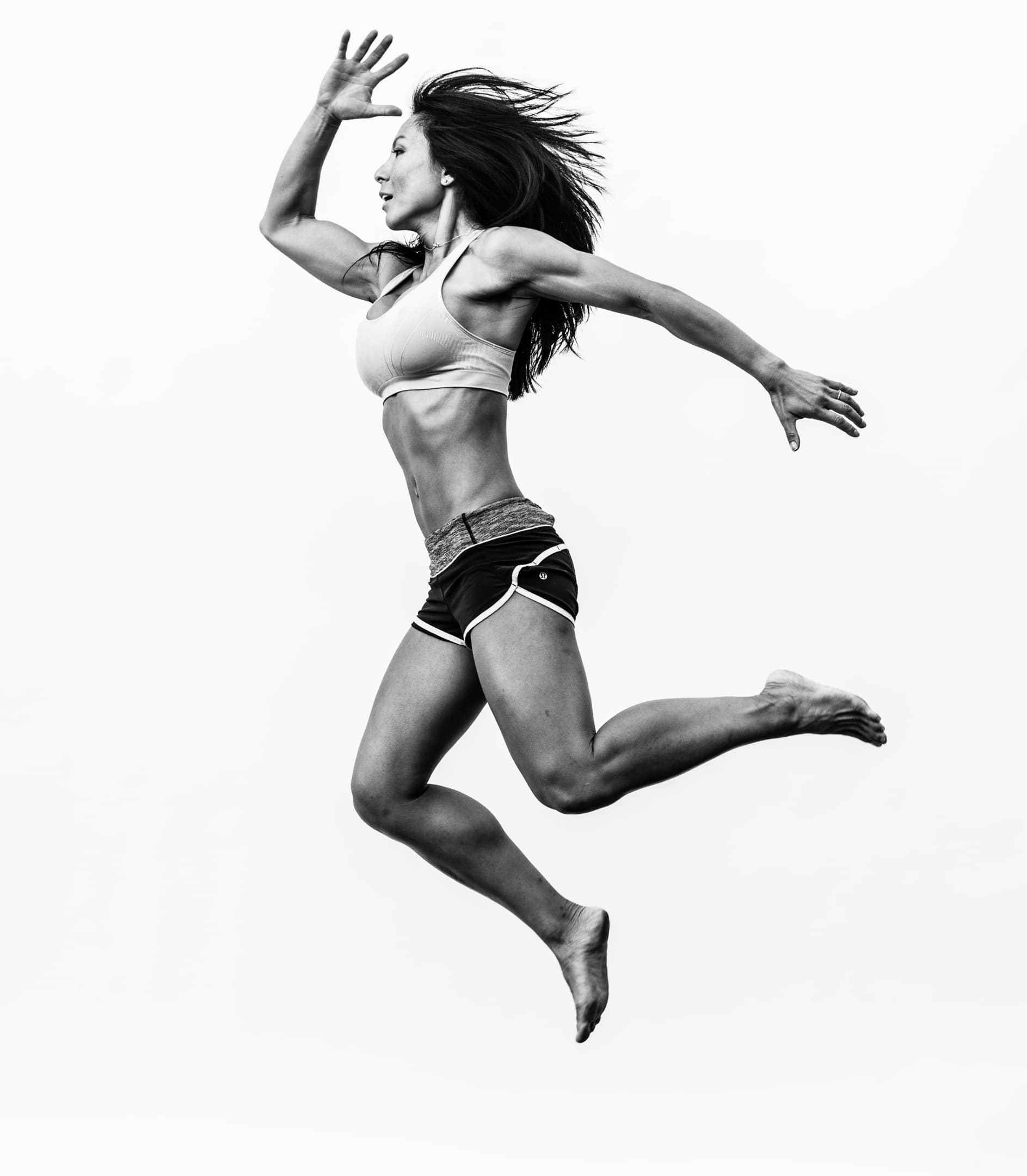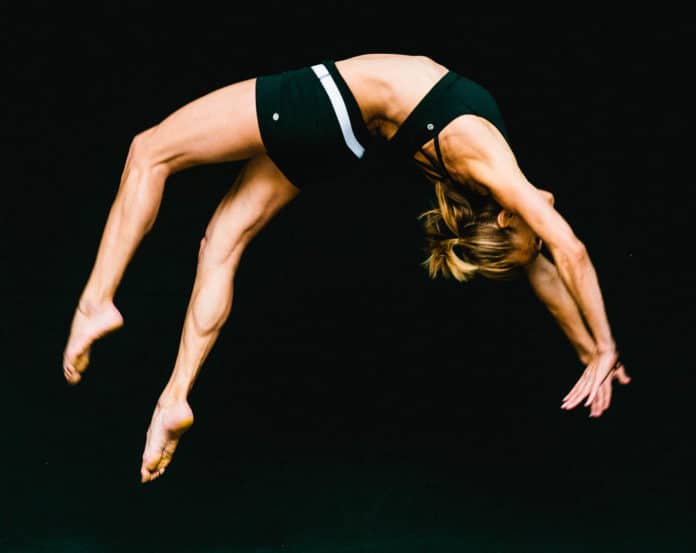By: Bija Bennett
There is no such thing as a completely sick person or a completely healthy person. There are only those who move more and those who move less.
Life is about movement — from the basic changes of our cells to the complex fluctuations in our emotions. Lack of movement means lack of life. So, if you put yourself in a chair for eight hours curled over a keyboard, and you do this day after day, your mind and body will be poised for a structural disaster.
If you don’t move it, you’ll lose it. This holds true for your mind as well as your emotions. Lack of movement is paralysis. And staying mentally and emotionally paralyzed, especially when you’re sad, distressed or wound up, makes for its own kind of disaster.
This makes movement in every mode essential for a healthy life. You need to move. You are a body in motion — dynamic — not static like a piece of sculpture. Your body holds a confluence of energy and intelligence. The more you move, the more physically, mentally and emotionally alive you become.
So What Moves You?
When you move, what moves you? Is it your emotions, your curiosity, your intellect — or is it your muscles? For each of us it’s some of the above, or perhaps all of the above. Yet one thing is critical: the need to move. And you need to move every muscle in your body, from your glutes (the largest muscle) to your heart (your hardest-working muscle) to the smallest muscle in your middle ear (which enables you to hear).
Not surprisingly, muscles are intelligent. As a matter of fact, the intelligence of your muscles is extraordinary. Muscles have memory. They even remember specific, complex motor patterns. Riding a bicycle is the easiest example. Even if you haven’t ridden a bicycle in decades, muscle memory kicks in.

Muscles have been given a bad rap. They are thought of in terms of brute force — something to pump up. But muscles are not the opposite of brains; muscles are not dumb. They have a remarkable, intelligence-gathering capacity. Once you learn how to apply this intelligence to your life, you will gain more sensitivity and power.
This you can learn through the movements of yoga. The word “yoga” comes from the Sanskrit word yuj, which means to “join, link, or connect.” The essence of yoga is yoking or uniting, and to practice yoga is to “join with”— to reach a new level of integration within yourself. Yoga is the art of linking to all parts of yourself — your body, your thoughts, your awareness, and your emotions. Each time you attempt to link with any aspect of yourself or your world, you are doing yoga.
Yoga is movement — physical movement, but also emotional and intellectual movement. That’s why there’s a big difference between movement and exercise in yoga. Movement in your body is a neuromuscular event as well as an emotional one, resulting from the integrated activity of your entire nervous system. Your nervous system initiates, controls and monitors all movement within your body and mind, and connects all the parts with its intelligence. If you move your body, you move your emotions as well as your mind. This is body intelligence. When you move, you transform things.
How to move? That’s up to each individual preference. But with any movement you do —whether you’re lifting weights, walking, or doing yoga — keep your attention on the flow of your breath. This awareness of your breath is what’s most important, because it engages your attention to whatever it is you are doing, and sends tone, energy and awareness throughout your body.
I Move, Therefore I Am
In the Age of Enlightenment, Descartes said, “I think, therefore I am.” Today, in a new Age of Enlightenment that’s focused on wellness and fulfillment, famed author Haruki Murakami, an avowed runner, is noted for writing, “I move, therefore I am.”
After all, without movement, there is no life. You can’t stay in one place and continue the journey. Connecting to what moves you, physically and emotionally, is movement, and movement brings meaning and joy to your life. So, keep moving, but do it in your own style.
About Bija Bennett: Bija Bennett is an acclaimed author, speaker and wellness industry pioneer whose practice focuses on the tenets of mind-body health, a discipline she teaches through accessible and engaging strategies. She has developed pioneering programs for Fortune 500 companies and major medical institutions, and written four influential books and articles on health, healing and personal growth. She counts Deepak Chopra among her colleagues and has provided programs to numerous celebrities, including Joni Mitchell, Calvin Klein, Barbra Streisand, George Harrison and Laura Dern. Through her website, www.bijab.com, Bija provides a range of wellness services tailored to individuals, businesses and audiences.




So many times when I read an article on Ageist I feel discouraged, as opposed to inspired. The images – particularly those of women – are something that not a lot of Boomers can aspire to. Either rich celebs sculpted by lipo and botox, or like the ones above that appear in many of your fitness articles. Maybe the two women featured in this post are both over 50 but, even on the off-chance they are, they’re not the norm. Neither of them is the writer of the article either, who I looked up; crazily enough, she looks like an actual baby boomer. Would be nice to see more wellness posts feature pics of the demographic you’re writing for. Thanks!
Hi Susan,
Thank you for your message. The visuals on people our age are the really tricky part, and it is hard to get it right. Sometimes we do, sometimes we don’t. But it is not for lack of trying really hard.
Both of the women above are actually in our demo. Fitness is in general a matter of choice- it comes down to how much time a energy one wants to devote to it. It is a ton of work, much more so than when we were younger. We profiled Joan a few weeks ago who is 72, and did not start working out until she was 70 and she completely transformed her body. Kimberly Fowler is 63 and runs marathons. I am 61 and am stronger than I have ever been in my life. The reason we show people who are fit is because we need role models, we need people to aspire to. Of course they are not average, that is the point, but they are not super athletes either. What they do is fully attainable. This is what is missing when people our age are spoken to; we are assumed to be less than, in need of special care and capable of much less than we really are. We are here to present heroes, people who are achieving at a higher level who inspire us all.
We don’t really do movie stars either, as you may have noticed. Not because we can’t, but as you point out, that is a whole other not very attainable world. We also do almost no retouching on the images we run. As to lipo and botox and all that, we don’t really have an opinion on it. Some people do it, some people don’t. We provide information, not recommendations on that sort of thing. We featured Selma Hyank on Instagram yesterday specifically because she won’t do that stuff. Personally, I would be very cautious of anything like that. It is a tricky road to go down.
I hope that helps, and thanks again for your thoughts. I am sure that are a lot of people who feel the same as you do.
David
Thanks David. You guys do a great job of promoting healthy, happy ageing and I appreciate your site a lot. Part of my day job
is sourcing images for content, and I do get discouraged by the lack of “real” people in photos these days; whether it’s stock photos or Influencer-driven UGC. So I may have been a little overly sensitive when I wrote my comment (and by a little, I mean a lot). Your comments above provide insight into just what a genuine community this is – again, one that I really appreciate, despite the occasional rant on my end. 😉